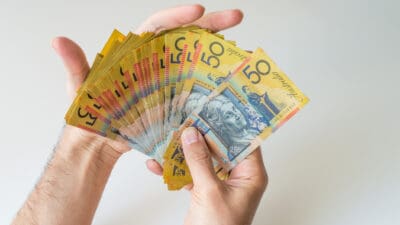This article was originally published on Fool.com. All figures quoted in US dollars unless otherwise stated.
Prime Day, Amazon's (NASDAQ: AMZN) members-only shopping event, once again set records, the company announced in a press release on Wednesday morning. Not only did the e-commerce giant sell more items than ever before, but small-business sellers on its platform also thrived, seeing their cumulative sales soar more than 100% year over year. Here's a close look at some of the key statistics Amazon released about its Prime Day event, which took place on Monday and Tuesday this week.1. Customers spent more than $1.9 billion on small businesses
Amazon kicked off a special promotional offer for customers who spent $10 on small businesses, giving them a $10 Amazon credit (limited to one item per customer), during the two weeks leading up to Prime Day. The promotion led to Prime members spending over $1.9 billion across 70 million small businesses. This represented "more than a 100% year-over-year increase on sales compared to the Prime Day October 2020 promotion," Amazon said.2. Back-to-school sales thrived
Members took advantage of the event to prepare for the school year. Amazon said it sold 600,000 backpacks, 1 million laptops, 1 million sets of headphones, 240,000 notebooks, 40,000 calculators, and 220,000 Crayola products.3. The most popular item was an Amazon device
While Amazon's e-commerce platform helps third-party sellers, it also provides a lift to sales of the company's own devices. Amazon said its Fire TV Stick, a streaming-TV device, saw greater sales during Prime Day than any other item. Additionally, sales of TVs powered by Amazon's own Fire TV operating system were higher than on any other Prime Day.4. Fire tablet sales were strong
The company said it sold "hundreds of thousands" of its Amazon Fire tablets.5. In total, over 250 million items were sold
Not only was this a record number, but members' total savings were also greater than ever before, the company said.What this means for Amazon's second quarter
These statistics bode well for Amazon's second quarter, whose results the company will likely report toward the end of next month. Of course, management was already anticipating that the shopping event would help drive strong sales growth during the period. It's guiding for second-quarter sales to be between $110 billion and $116 billion, translating to 24% to 30% year-over-year growth. With a strong Prime Day, Amazon shouldn't have any trouble hitting its guidance -- particularly since the year-ago period doesn't even include a Prime Day. Last year, Prime Day took place in October.This article was originally published on Fool.com. All figures quoted in US dollars unless otherwise stated.









